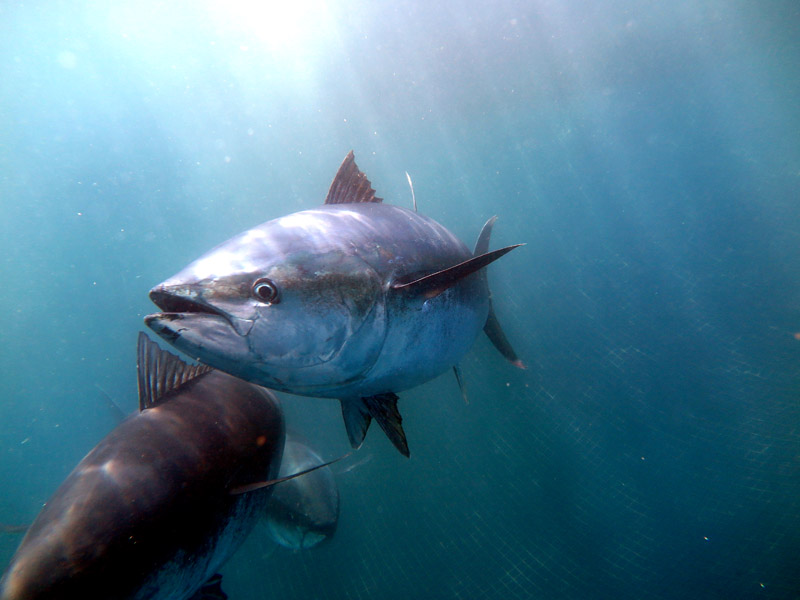Pioneering research method reveals bluefin tuna’s fate
Últimas noticias
Una mirada LGTBIQ+ al reino animal
Circular Economy in Action: Valorisation of By-products through Projects like PRIMA NEWFEED
Strategic Perspectives: Highlights from the Food4Future World Summit for Business Leaders
- International research concludes that the predicted rise in sea temperatures in the Mediterranean over the next 50 years could lead to the possible relocation of bluefin tuna breeding grounds to the Bay of Biscay or other cooler areas.
- The research team used an innovative method based on the analysis of the otolith, a calcareous structure inside the skull that indicates when waters are warming excessively.
- The results of the research have been published in the prestigious journal Nature Communications: https://www.nature.com/articles/s41467-023-41930-2
29 November 2023. The return of bluefin tuna to Northern European waters is a conservation success story, but rising sea temperatures in their Mediterranean nursery grounds mean this recovery may be short-lived, according to new research led by the University of Southampton.
Temperatures expected in the Mediterranean within the next 50 years are expected to drive juvenile tuna out of the Mediterranean, where they may be accidentally caught in existing sardine and anchovy fisheries – requiring fishery managers to adapt their methods to allow tuna nurseries to establish.
Outlining the research, published in Nature Communications, lead author Clive Trueman, Professor of Geochemical Ecology at the University of Southampton, said: “We have found that anything over 28 degrees Celsius will adversely impact bluefins’ growth. Drawing on compilations of global climate model projections, we show that most of the Mediterranean Sea will exceed that 28 degrees threshold within 50 years under current predictions of climate change, making it too warm for juvenile bluefin. We would, therefore, expect the tuna to move their nursery areas, potentially into the Bay of Biscay or other cooler regions – which would place juvenile tuna within existing fisheries for species like anchovy and sardine.”
This trend is not limited to the eastern Atlantic: “We also see that in the western Atlantic, bluefin tuna are spawning outside the Gulf of Mexico, particularly off the northeastern United States in the Slope Sea. This could be due to the increase in summer temperatures in the Gulf of Mexico, which are already well above the optimum temperature for bluefin tuna. Although we cannot yet confirm this as the cause, it could be an indication that the Eastern Atlantic and Mediterranean populations are behaving in a similar way, looking for alternatives to reproduce,” adds AZTI’s fisheries management researcher, Igaratza Fraile.
Bluefin spawn on both sides of the Atlantic Ocean, and fish typically return to their nursery area for spawning. Eastern Atlantic bluefin spend their first year in the Mediterranean. When they are approximately one year old and mature enough to regulate their body temperature, they go out into the Atlantic, sometimes crossing the Atlantic ocean searching for small prey fish like sardines, herring and mackerel, returning to the Mediterranean to spawn.

Using a pioneering method of analysis
To discover the cut-off temperature for bluefins to thrive, the international research team, which included scientists from 8 countries including AZTI in Spain and the British Antarctic Survey, used a pioneering method of analysing a tissue called the otolith.. The otolith, found behind the brains of bony fish, has long been used reveal a fish’s age, but the new research used the chemistry of tuna otoliths to measure the pace of life of bluefin tuna.
Professor Trueman, who pioneered the otolith decoding method, explained: “All fish have a stony tissue in their ear called an otolith, or ‘ear stone’, which enables them to perceive noise and to balance. Our new work uses variations in the levels of natural stable isotopes of carbon and oxygen in the otolith to reveal each tuna’s individual metabolic rate. This can tell us when waters are getting too hot for the fish to handle -it’s like a natural fitness tracker.”
Bluefins are the largest tuna, at up to three metres long, and one of the fastest, most powerful fish in the sea, capable of leaping out of the water at 43 miles per hour. They are also highly valuable, selling for thousands of pounds for their meat, a delicacy in sushi and sashimi.







